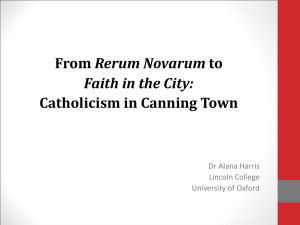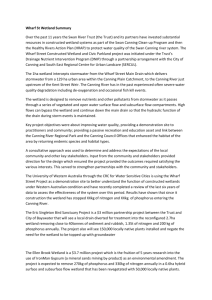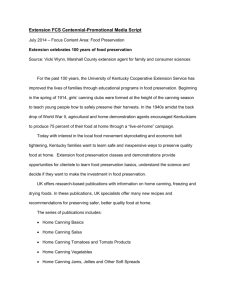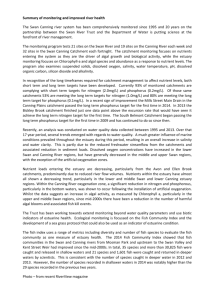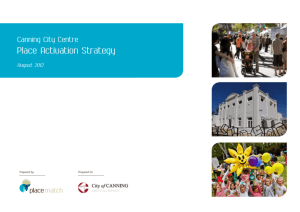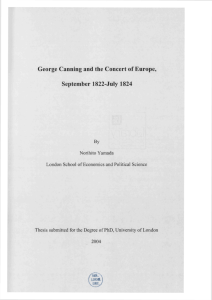Treatment Train Approach- Canning Plains Catchment The Canning
advertisement
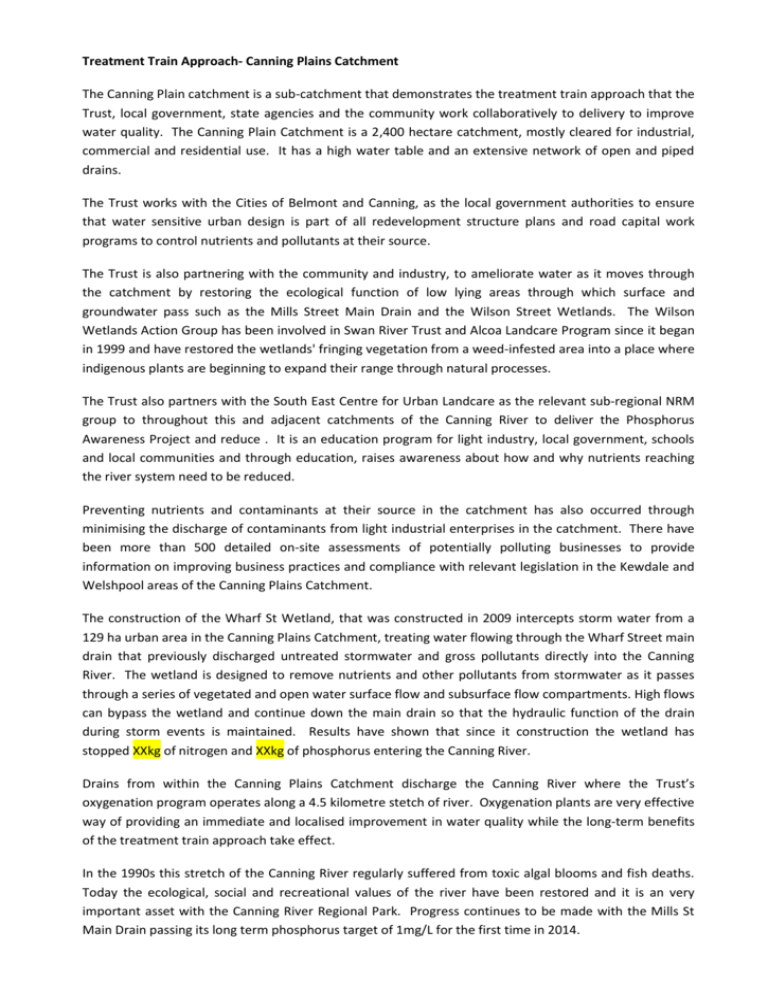
Treatment Train Approach- Canning Plains Catchment The Canning Plain catchment is a sub-catchment that demonstrates the treatment train approach that the Trust, local government, state agencies and the community work collaboratively to delivery to improve water quality. The Canning Plain Catchment is a 2,400 hectare catchment, mostly cleared for industrial, commercial and residential use. It has a high water table and an extensive network of open and piped drains. The Trust works with the Cities of Belmont and Canning, as the local government authorities to ensure that water sensitive urban design is part of all redevelopment structure plans and road capital work programs to control nutrients and pollutants at their source. The Trust is also partnering with the community and industry, to ameliorate water as it moves through the catchment by restoring the ecological function of low lying areas through which surface and groundwater pass such as the Mills Street Main Drain and the Wilson Street Wetlands. The Wilson Wetlands Action Group has been involved in Swan River Trust and Alcoa Landcare Program since it began in 1999 and have restored the wetlands' fringing vegetation from a weed-infested area into a place where indigenous plants are beginning to expand their range through natural processes. The Trust also partners with the South East Centre for Urban Landcare as the relevant sub-regional NRM group to throughout this and adjacent catchments of the Canning River to deliver the Phosphorus Awareness Project and reduce . It is an education program for light industry, local government, schools and local communities and through education, raises awareness about how and why nutrients reaching the river system need to be reduced. Preventing nutrients and contaminants at their source in the catchment has also occurred through minimising the discharge of contaminants from light industrial enterprises in the catchment. There have been more than 500 detailed on-site assessments of potentially polluting businesses to provide information on improving business practices and compliance with relevant legislation in the Kewdale and Welshpool areas of the Canning Plains Catchment. The construction of the Wharf St Wetland, that was constructed in 2009 intercepts storm water from a 129 ha urban area in the Canning Plains Catchment, treating water flowing through the Wharf Street main drain that previously discharged untreated stormwater and gross pollutants directly into the Canning River. The wetland is designed to remove nutrients and other pollutants from stormwater as it passes through a series of vegetated and open water surface flow and subsurface flow compartments. High flows can bypass the wetland and continue down the main drain so that the hydraulic function of the drain during storm events is maintained. Results have shown that since it construction the wetland has stopped XXkg of nitrogen and XXkg of phosphorus entering the Canning River. Drains from within the Canning Plains Catchment discharge the Canning River where the Trust’s oxygenation program operates along a 4.5 kilometre stetch of river. Oxygenation plants are very effective way of providing an immediate and localised improvement in water quality while the long-term benefits of the treatment train approach take effect. In the 1990s this stretch of the Canning River regularly suffered from toxic algal blooms and fish deaths. Today the ecological, social and recreational values of the river have been restored and it is an very important asset with the Canning River Regional Park. Progress continues to be made with the Mills St Main Drain passing its long term phosphorus target of 1mg/L for the first time in 2014.
